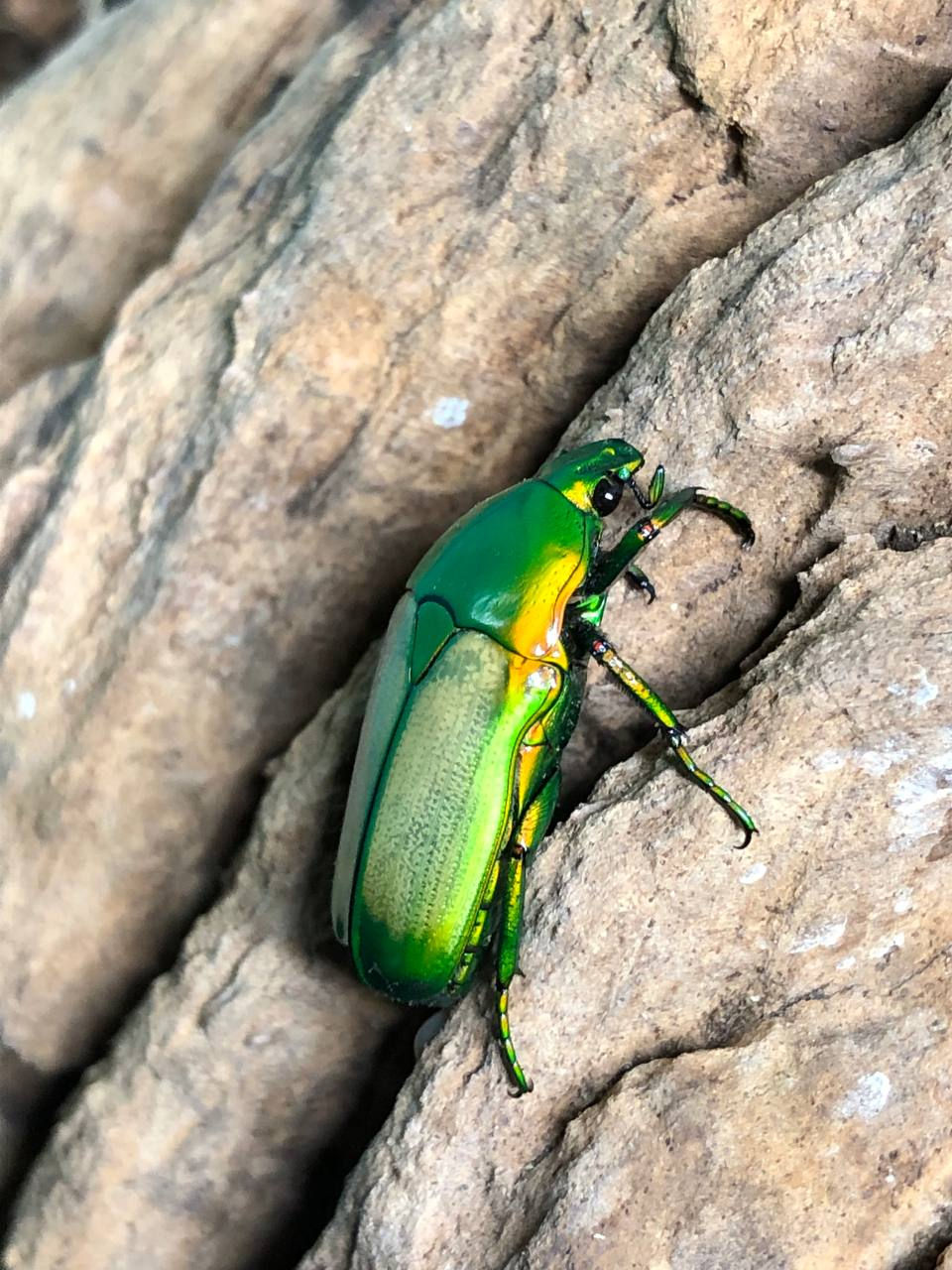Domino Cockroaches (Therea petiveriana) - Nymphs / Adults
About Domino Cockroaches:
- The Domino Cockroach (Therea petiveriana), often called the desert cockroach, seven-spotted cockroach, or Indian domino cockroach, is a species of crepuscular cockroach found in Sri Lanka. This species is one of the more attractive types of cockroach found in the hobby, and in our experience, one of the most active and interesting to keep. Adults can be seen often running around and climbing within their tanks, and seem to enjoy going around in small groups.
- Males and females look the same, however you can sex the adults by looking at the antenna and ventral segments of the abdomen. Males have long hairy antenna and two segments, whereas females have smaller, straighter antenna and one segment with a bulged appearance. Nymphs are saucer shaped and a coppery-brown colour, and spend most of their time hidden within the substrate.
- Nymphs undergo several molts over 8 months before becoming an adult, which then live for a further 2-4 months. Like other roach species, adults communicate using pheromones and when disturbed can release secretions with volatile compounds, which induce alarm behaviour amongst the colony.
- It is believed that these cockroaches developed their striking black and white colouration through Batesian mimicry, allowing them to appear like the species of predatory ground beetle Anthia sexguttata, which releases a potent irritant as a defence mechanism. Pretty smart!
- Adult Size: 2-3cm
- Lifespan: 8 months Nymphs, 2-4 months Adults
- Status: captive bred
- Place of Origin: Sri Lanka
- Temperature: 22-28˚C
- Humidity: 50-60%
- Diet: hardwood leaf litter, rotting hardwood, mushrooms, fruit and veg (banana, melon, cucumber, apple, carrot, squash), protein (fish pellets, fish flakes, bee pollen, oats)
-
We keep a colony of adults and many nymphs in the same 40X30X30cm tank which is a converted aquarium with mesh covering any escape points, at 22-24˚C and 60% humidity. You can use a heat mat on the side of the tank above the substrate level if your house is on the cooler side. A smaller colony of 5-10 roaches will be just fine in a 20x20x20cm tank.
-
We like to use plenty of large cork bark, fake and live plants, and hardwood branches to provide both climbing and hiding opportunities. We often see our adults running around the tank in the day so it's important to have an enriching, natural environment for them. We suggest keeping the substrate damp (not soaking!), and mist 1-2 times a week in one half of the enclosure.
- We have had success using both our Rainforest and Millipede Edible substrates for these, but a substrate that is rich in organic material and can hold moisture well is also suitable. A substrate depth of around 10cm is sufficient, but deeper allows the adults and nymphs to bury themselves more comfortably. Leaf litter, moss and botanicals can be added on top of the substrate for a more natural feel and will also be munched on by roaches.
- We feed our colony twice a week with fresh fruits and veggies, along with a good sprinkling of protein around the whole enclosure, or provided in a dish. Start with a small amount of food and monitor how long it takes your colony to finish it before increasing portions. Not only does this help you reduce food waste it also prevents outbreaks of mites and fruit flies.
- We recommend staying on top of spot cleaning and remove any uneaten food and waste from the enclosure 1-2 times a week. Roaches are prone to fungal infections and a dirty environment is a quick way to harm your colony. Substrate can be changed once every few months and we advise adding a clean-up crew like springtails and dwarf white isopods to help keep the substrate maintained and your tank clean and healthy!

























